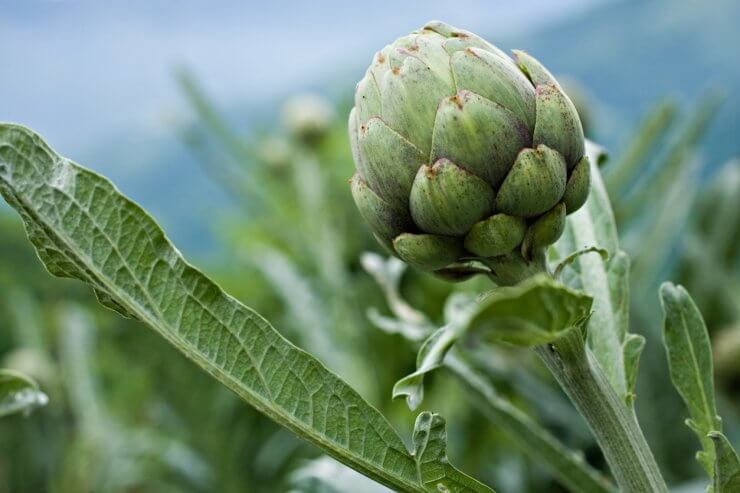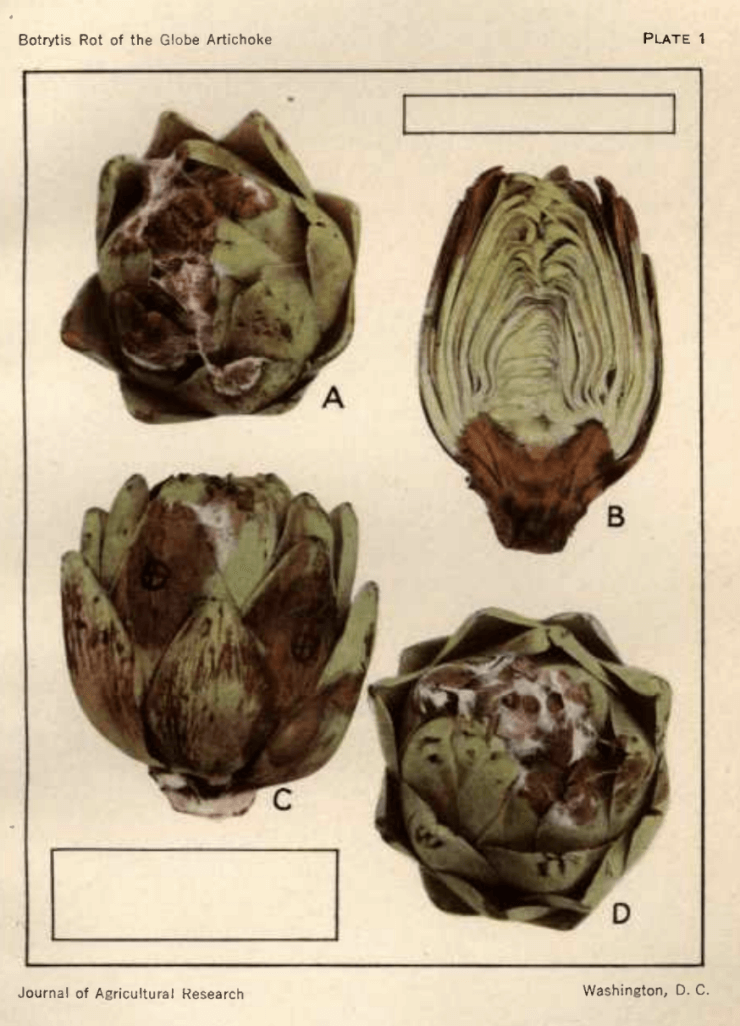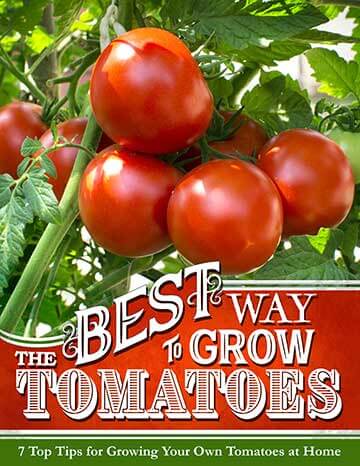
You’ve likely come across Botrytis rot, otherwise known as gray mold, on your fruits, vegetables, or other plants at some point. In cool, damp conditions, the fungus Botrytis cinerea can spread quickly and infect anything from blueberries and strawberries to eggplants, onions, carrots, beans, and artichokes.
In fact, as far back as 1918, Botrytis rot was a problem for the beloved artichoke. A 1924 report sanctioned by the U.S. Department of Agriculture noted that “Ninety-six per cent of the [railroad] car-lot inspections made during 1918 to 1923 report losses of 2 to 100 per cent due to Botrytis.”
The fungus is also not incredibly picky, as it will colonize any weak points from flower petals to insect damage. It can overwinter in the soil or on plant material, and it can lie dormant for some time.
Discover 7 top tips for growing, harvesting, and enjoying tomatoes from your home garden—when you access the FREE guide The Best Way to Grow Tomatoes, right now!

Image from the Journal of Agricultural Research
What does Botrytis rot look like, and what can you do about it?
If you notice gray or brown fuzzy spores on your artichokes or other plants, and the infected fruit is soft or smells bad, you may have Botrytis rot. That’s especially true if you notice it when the temperatures are hovering around 60 degrees Fahrenheit, and there’s been a lot of rain. The artichoke head may also have brown or greyish discolored areas.
As with almost any pest or disease, the best plan is to prevent problems from gaining a foothold. So what does that look like for Botrytis rot on artichokes?
- Plant artichokes in well-drained soil.
- Plant in an area with plenty of sunlight.
- Keep enough distance between plants that there is adequate airflow.
- Keep your garden and the area around it clean and free of dead plant material and weeds.
- Water the soil, not the plant. That will help you avoid Botrytis rot as well as many other plant diseases.
- Take steps to prevent damage from other pests.
- Use a fungicide as a preventative measure when conditions are ideal for Botrytis rot.
And what should you do if you find an infected plant? Very carefully remove the infected plant from the area and burn it or dispose of it in a tied garbage bag.
Here’s another interesting note regarding this disease. It doesn’t just spread while your artichokes are out in the field. You still need to be cautious once you harvest them. Any damage, even after harvest, is an invitation to the Botrytis cinerea.
I’m not going to leave you with just that, though. Take a close look at the steps you can take to keep your artichokes safe from this fungal disease, and you might notice something.
Everything there is also helpful in preventing other fungal diseases. Good soil, good airflow, healthy plants, and a clean garden are important in so many aspects of gardening.
Have you had to deal with Botrytis rot? What did you do?
Discover 7 top tips for growing, harvesting, and enjoying tomatoes from your home garden—when you access the FREE guide The Best Way to Grow Tomatoes, right now!





did I see you as an American site